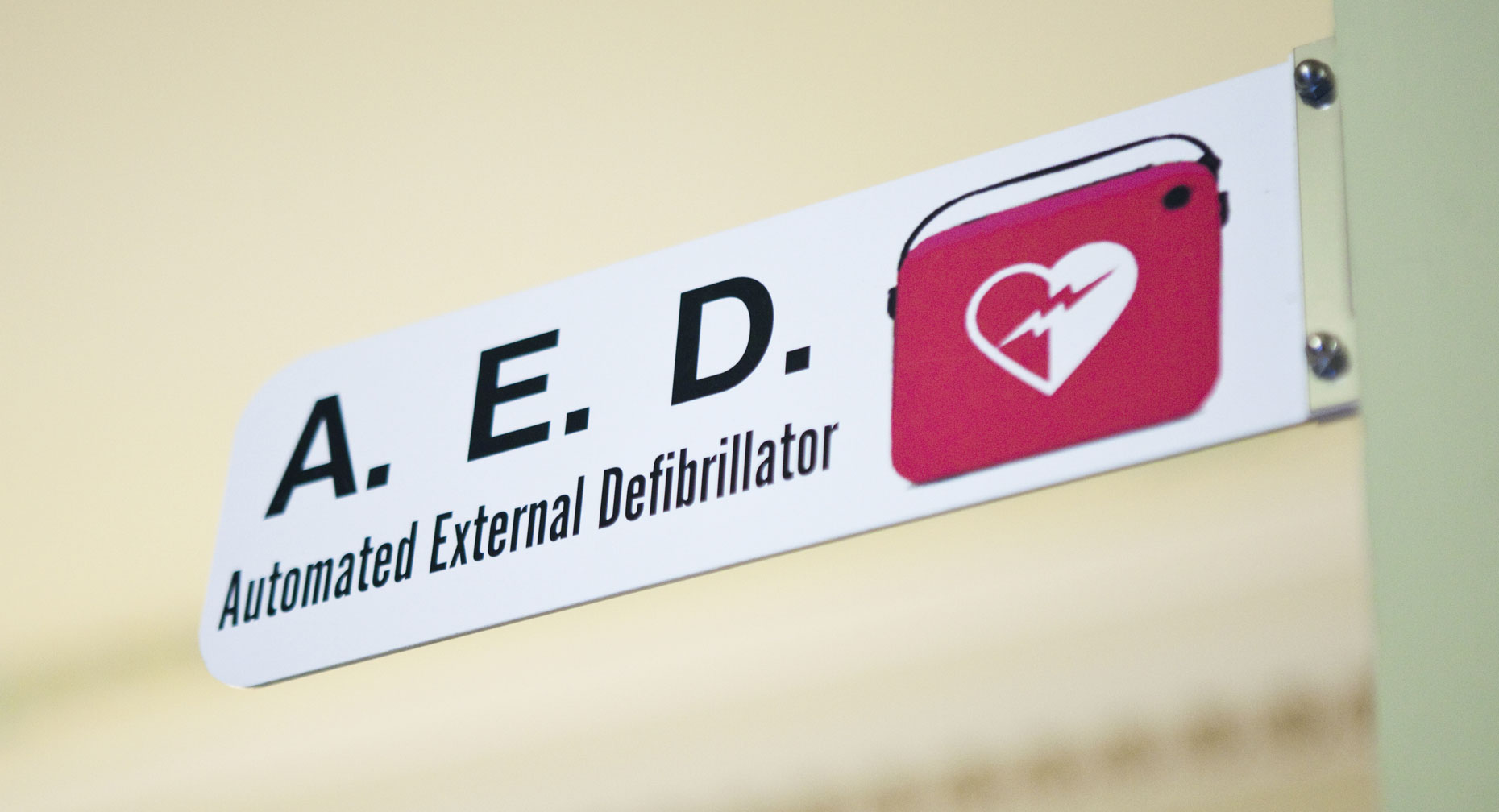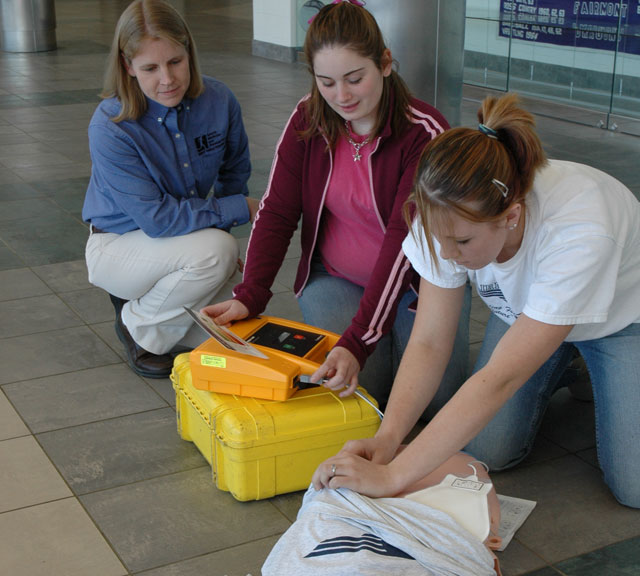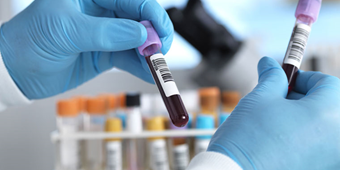- Cardiology And Vascular Health
- Fitness and Exercise
- Health Topics
- Heart Health
- Injury/Illness
- Understanding Heart Disease
Easy-To-Use AEDs Could Restart Your Heart

Find Your Perfect Match
Answer a few questions and we'll provide you with a list of primary care providers that best fit your needs.
Seconds and minutes count when trying to save the life of someone whose heart has stopped beating due to sudden cardiac arrest. The chance of survival drops by 10 percent each minute after the heart stops, as the brain and other vital organs are deprived of oxygenated blood.
The good news is that even people with no training can use an AED when the situation requires fast action.
This is why the increasing appearance of automated external defibrillators (AEDs) in public places is a welcome, lifesaving sight. Today you’re likely to find them in schools, government buildings, businesses, hotels, golf courses, sporting venues, malls, airports, airplanes, and community and convention centers. They’re often kept in wall cases, in plain sight and easy reach.
Portable And Lifesaving
 Meant
for use by the general public, AEDs are portable, easy-to-use, computerized medical devices. They require only a few hours of training for safe operation. The good news is that even people with no training can use an AED when the situation requires
fast action.
Meant
for use by the general public, AEDs are portable, easy-to-use, computerized medical devices. They require only a few hours of training for safe operation. The good news is that even people with no training can use an AED when the situation requires
fast action.
Here’s how they work. The rescuer places the AED’s sticky pads with sensors, or electrodes, on the chest of the person with sudden cardiac arrest. The sensors check the heart rhythm. The AED’s computer analyzes the rhythm to determine whether an electric shock is needed to return the heart to proper rhythm.
If a shock is required, the AED uses voice prompts to instruct the rescuer when to activate the shock. The electrodes deliver the shock.
Signs Of Sudden Cardiac Arrest
Someone in sudden cardiac arrest may:
- Suddenly collapse and lose consciousness
- Already be unconscious when you come upon him, unable to respond to you
- Not be breathing or breathe abnormally
- Have no pulse
- Have dark or blue skin, caused by lack of oxygen
- Be completely still or move in spasms
If you see this happening, confirm that the person can’t respond, then call 9-1-1. Check the person’s breathing and pulse. If they’re absent or irregular, find the nearest AED and follow the instructions for using it.
Find Your Perfect Match
Answer a few questions and we'll provide you with a list of primary care providers that best fit your needs.
Source: National Heart, Lung and Blood Institute




